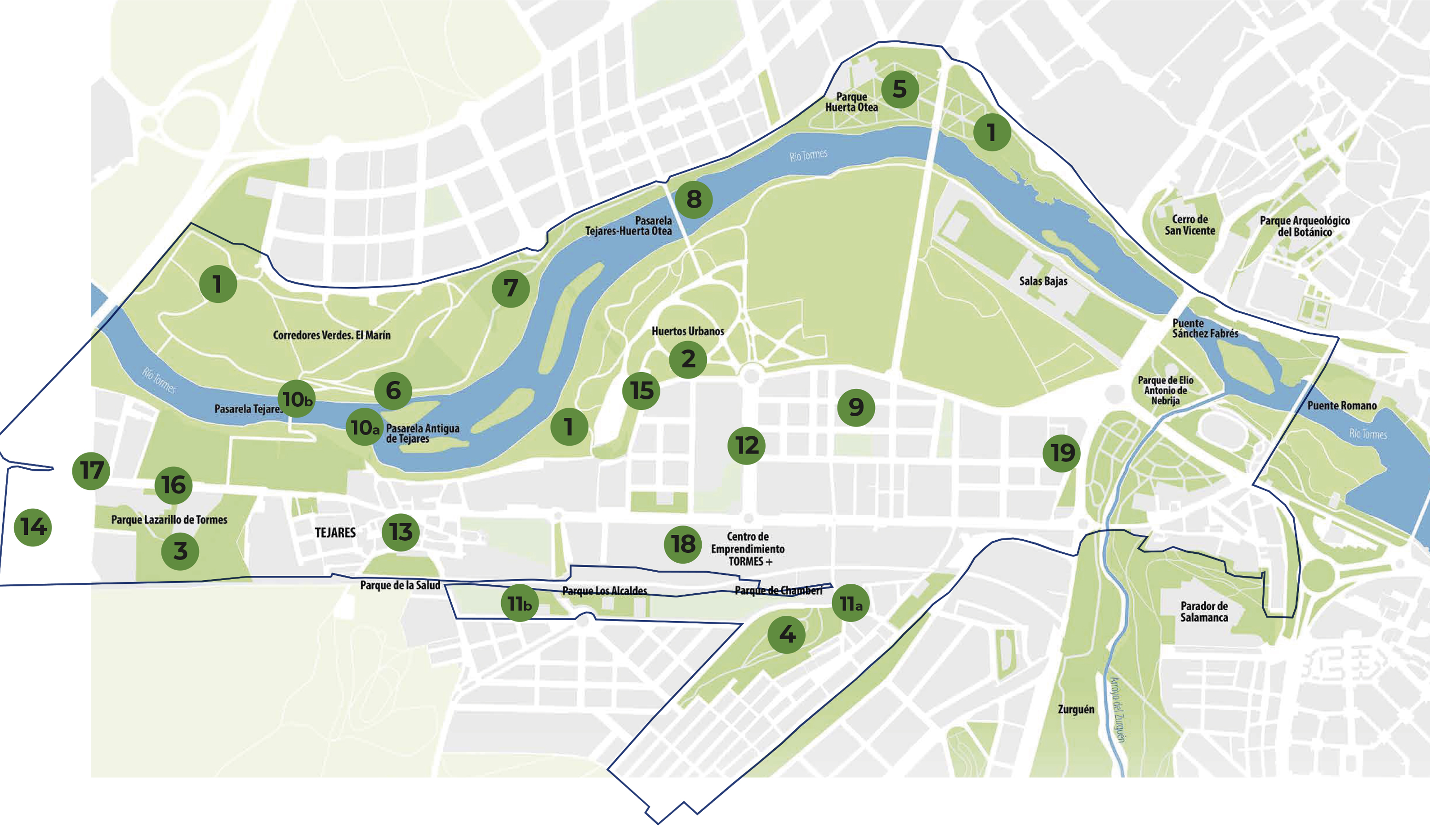EDUSI TORMES+: THE RIVER AREA AS AN ELEMENT OF URBAN INTEGRATION
Since 2017, the City Council of Salamanca has been working on implementing the Más Tormes Integrated Sustainable Urban Development Strategy (EDUSI TORMES+). This Strategy, co-financed by the European Regional Development Fund (ERDF) through the Sustainable Growth Programme 2014-2020, involved a functional transformation of the Tormes river area, its riverbanks and the connecting areas.
The Resolution of 29 September 2016 from the Secretariat of State for Budgets and Expenditure of the Ministry of Finance and Public Administrations, through which grants from the first call for bids for selecting Integrated Sustainable Urban Development Strategies were awarded, marked the administrative start of this successful Strategy. With municipal investment of more than twenty-two million euros, of which approximately nine and a half come from ERDF, it is safe to say that it has undoubtedly been one of the largest sustainable urban development initiatives carried out in the city.
The Strategy was registered on the conceptual framework defined by the European Union’s Cohesion Policy, implemented by means of the document framework ‘European Strategy 2020’ which identifies three features which should characterise growth processes in the EU. Firstly, smart growth through knowledge development and innovation; secondly, sustainable growth based on a greener economy which is more effective and more competitive at resource management; and lastly, integrated growth, focussed on boosting employment, as well as social and territorial cohesion.
The focal point of the Strategy is the river Tormes and its riverbanks as a unique area of opportunity to develop projects and initiatives valuing local resources. Thus, the intervention contributes to improving the spacial interaction and integration of the Trastormes neighbourhoods and their connection to the rest of the city, overcoming the river’s role as a barrier, a space of separation between the urban centre and the suburbs, which it has historically represented.


